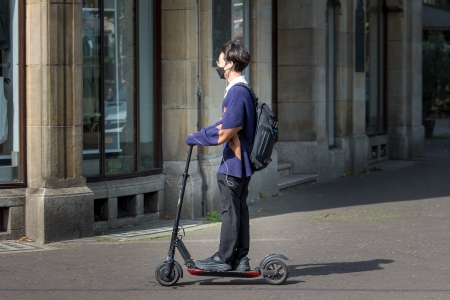Currently, all electric (cargo)bikes (so LEVs with pedal assistance) are allowed to use public roads without any admittance procedure. LEVs without pedal assistance, not covered by European legislation, (see also the question Which LEVs are allowed on Dutch public roads?), have to comply with the admittance procedure as formulated for the special moped rule [3]. The LEV authorisation framework is expected to replace the current special moped rule from 2023 onwards [1].
Current admittance procedure: Special moped rule
Since January 2011, the special moped rule has applied, which allows the minister of Infrastructure and Water Management to designate motor vehicles as authorised for use on Dutch public roads. In 2019, in response to the tragic crash with a Stint electric child cart, the rule was somewhat tightened. Late June 2021, the rule was adapted once more, in anticipation of the procedures pertaining to the future LEV authorisation framework. A manufacturer, importer or distributor may apply for admittance at the ministry of Infrastructure and Water Management. The applicant has to show that the vehicle has been constructed safely, is safe to use and that each subsequent vehicle that is produced is identical to the vehicle assessed during the admittance procedure. In addition, SWOV will carry out a risk inventory for every vehicle concept, in order to point out the risks that could occur in the interaction between vehicle, operator and traffic environment. A vehicle concept consists of vehicles that are so similar in design and usage that their operational characteristics correspond. The Netherlands Vehicle Authority will carry out a technical inspection and operational tests, will test all the different application components and will present an advice to the minister of Infrastructure and Water Management. On the basis of this advice, the minister will make a decision.
LEV authorisation framework
An authorisation framework for light electric vehicles is currently being worked on [6]. The initiative for this new framework was prompted by a report of the Dutch Safety Board: ‘lessons learned from the Stint accident’ [4]. One of the recommendations of the report was to review the admittance of new vehicles. The new framework will include small electric (cargo)bikes (category 1a), small electric vehicles without pedal assistance (category 1b: PLEVs) such as electric scooters and the Segway, and heavier electric cargo bikes for the transport of goods (category 2a) or passengers (category 2b) (see the question What do we mean by light electric vehicles(LEVs)?). For category 1a, admittance is unlikely to change, and vehicles of this category will be allowed to drive on the road without any admittance procedure. Vehicles in the other categories will probably be subjected to an admittance procedure which will be similar to the present procedure to have a vehicle designated as a special moped. This implies that a technical inspection and a driving test will be carried out, and the road safety risks of the vehicle will be inventoried. After admittance, production of the vehicle will be monitored to evaluate whether the admitted vehicle does not change during production.
